What Are the 10 Types of Mental Disorders
What Are the 10 Types of Mental Disorders?Exploring Common Mental Health Conditions
Curious about the 10 types of mental disorders? This comprehensive guide provides insights into various common mental health conditions, their symptoms, and available treatments.
Introduction
Understanding the many sorts of mental diseases is crucial for developing a more understanding and compassionate community. Mental health is a crucial component of total wellbeing. We’ll examine the 10 categories of mental illnesses that afflict millions of individuals globally in this thorough overview. We’ll examine each disorder’s unique traits, symptoms, and potential remedies, from mood disorders to anxiety disorders. 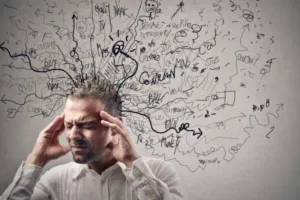
What Are the 10 Types of Mental Disorders?
The ideas, feelings, and behaviors of a person can be severely impacted by mental diseases. Here, we’ll examine each of the ten categories of mental illness in more detail:
1. Anxiety Disorders
Generalized anxiety disorder, panic disorder, and social anxiety disorder are all included in the category of anxiety disorders. Excessive worry, dread, and uneasiness are common symptoms of anxiety disorders, and they can cause physical symptoms like restlessness and a fast heartbeat.
2. Mood Disorders
A person’s emotional state can be affected by mood disorders, such as depression and bipolar disorder. Depression, which is characterized by on-going melancholy and loss of interest, can cause fatigue and difficulties focusing. Extreme mood swings between despair and mania are a feature of bipolar illness.
3. Schizophrenia
Schizophrenia is a complicated mental illness that alters a person’s thinking, reality perception, and interpersonal interactions. This syndrome frequently manifests as hallucinations, delusions, and disordered thinking.
4. Personality Disorders
Personality disorders cause unhealthful thought, behavior, and interpersonal habits. Disorders like borderline personality disorder and narcissistic personality disorder can make it hard to manage emotions and establish healthy relationships.
5. Obsessive-Compulsive Disorder (OCD)
Obsessions and compulsions are recurrent activities or mental acts that OCD sufferers engage in to help them feel less anxious. Despite the irrationality of these compulsions, people with OCD frequently have trouble controlling them.
6. Post-Traumatic Stress Disorder (PTSD)
After being involved in or witnessing a terrible event, PTSD can develop. Flashbacks, nightmares, and extreme anxiety are possible symptoms. Reminders of the traumatic event may be difficult for those with PTSD to handle.
7. Eating Disorders
Unhealthy eating patterns and an unrealistic body image are the foundation of eating disorders including anorexia nervosa, bulimia nervosa, and binge eating disorder. Serious mental and physical implications may result from these situations.
8. Substance Use Disorders
Alcohol, narcotics, and prescription prescriptions are some of the things that people with substance use disorders use excessively and in hazardous ways. Relationships and physical health are only two of the many areas of life that these diseases may negatively affect.
9. Attention-Deficit/Hyperactivity Disorder (ADHD)
A neurodevelopmental condition called ADHD usually manifests in childhood. Adherence issues, impulsivity, and hyperactivity are its defining traits. For those with ADHD, proper management and support are crucial.
10. Dissociative Disorders
Disruptions in memory, awareness, identity, or perception of the surroundings are symptoms of dissociative disorders. Memory lapses and a disjointed sense of self can result from illnesses like dissociative identity disorder (formerly known as multiple personality disorder)
FAQs
1 Can mental health conditions be treated?
A mix of treatments, drugs, and lifestyle modifications can successfully manage a wide range of mental diseases.
2 Are these conditions common?
A: It is true that mental illnesses afflict people of all ages, genders, and socioeconomic backgrounds.
3 How can I help someone who has a mental illness?
A: The best methods to support someone dealing with a mental disease are by showing compassion and empathy as well as by urging professional assistance.
4 Do genetics have a role in the emergence of mental illnesses?
A: While environmental circumstances and life experiences certainly play a part in the emergence of mental diseases, genetics can also be an influence.
5 Is asking for assistance a show of weakness?
A: Certainly not. It takes courage and self-awareness to seek treatment for mental health issues.
6 Can modifying your lifestyle reduce your symptoms?
A healthy lifestyle that incorporates regular exercise, a balanced diet, and stress management can enhance therapy and lessen symptoms.
Conclusion
For the purpose of eradicating stigma and fostering open discussions about mental health, it is essential to comprehend the 10 different forms of mental diseases. Anyone may be affected by these illnesses, and asking for assistance is a show of strength. Remember that there is professional assistance and therapy available if you or someone you know is dealing with a mental illness. We can build a more accepting and helpful society for people dealing with these difficulties by encouraging empathy and education.
Advertisement
Understanding the 10 Types of Mental Disorders
Exploring Anxiety Disorders:
First of the 10 Types of Mental Disorder
Millions of people throughout the world are affected by anxiety disorders, which are among the most common mental health issues. The specifics of anxiety disorders, including their many subtypes, symptoms, suspected causes, and accessible treatments, will be covered in this page. By developing a greater knowledge of anxiety disorders, we may contribute to the elimination of the stigma associated with mental health and the promotion of successful treatment strategies.
Advertisement
What Are Anxiety Disorders?
A category of mental health illnesses known as anxiety disorders are characterized by excessive and enduring sensations of dread, concern, or uneasiness. Overwhelming and frequently interfering with daily life, these emotions make it difficult for people to engage in routine tasks and preserve good relationships.
Subtypes of Anxiety Disorders
There are several varieties of anxiety disorders, and each has a unique set of characteristics and signs:
1. Generalized Anxiety Disorder (GAD)
Chronic and excessive anxiety about many elements of life, even when there is little or no cause for worry, is a symptom of GAD. GAD sufferers may be agitated, irritable, tense in their muscles, and have trouble focusing.
2. Panic Disorder
Unexpected panic episodes that happen frequently are the hallmark of panic disorder. A racing heart, shortness of breath, and perspiration are some of the physical symptoms that go along with these episodes, which are abrupt bursts of great dread or pain.
3. Social Anxiety Disorder
An extreme dread of social events and interactions is referred to as social anxiety disorder or social phobia. People who with this illness can worry excessively about being criticized or ashamed in front of others.
4. Specific Phobias
Intense phobias of certain things or circumstances, including heights, spiders, or flying, are known as specific phobias. Anxiety and panic attacks can be brought on by exposure to the phobic stimuli.
5. Agoraphobia
Agoraphobia is a dread of circumstances in which getting out might be challenging or embarrassing, which causes avoidance of locations like crowded areas or public transit. This anxiety may render one helpless and lonely.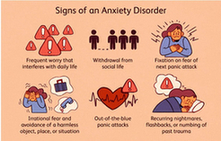
Symptoms of Anxiety Disorders
The physical and mental signs of anxiety disorders might differ greatly from person to person. Typical signs include:
excessive worry: Constantly experiencing anxiety or trepidation for no discernible cause.
Unable to sit still or feeling tense are both examples of restlessness.
Physical symptoms: Feelings of shaking, sweating, fast pulse, and dizziness.
Finding it difficult to concentrate on things owing to rushing thoughts and worry.
Being quickly upset or agitated is known as irritability.
Sleep disturbances: Struggling to get asleep or remain asleep as a result of worrying thoughts.
Causes and Risk Factors
A confluence of genetic, environmental, and neurological variables can result in anxiety disorders. Typical risk elements include:
Genetics: Anxiety or other mental health illnesses run in the family.
Brain chemistry: Imbalances in neurotransmitters that regulate mood and emotions
Trauma: Past traumatic experiences or incidents may be a factor in the emergence of anxiety disorders.
Stress: Prolonged stress or significant life changes might cause or make symptoms worse.
Treatment Options
The first step in controlling anxiety problems is to seek help. There are effective therapies available. Options for therapy include:
Therapy: Individuals can address their concerns and alter their negative thought patterns with the use of exposure treatment and cognitive behavioral therapy (CBT).
Medication: To treat symptoms, doctors may give antidepressants and anxiety drugs.
Changes in lifestyle: Stress reduction measures, a healthy diet, and regular exercise can all help with symptom relief.
Advertisement
Understanding Mood Disorders
Exploring the Second of the 10 Types of Mental Disorders

A collection of mental health diseases known as mood disorders have a significant negative influence on a person’s emotional state and general well-being. Mood disorders, including their many forms, symptoms, probable causes, and accessible treatments, will be thoroughly discussed in this article. Understanding mood disorders better would help us develop empathy and better support others who are struggling with them.
What Are Mood Disorders?
Affective disorders, or mood disorders, are defined by serious disruptions in a person’s emotional state. T he individual’s capacity to function and enjoy life may be negatively impacted by these disruptions, which can vary from bouts of intense despair to bursts of high mood.
he individual’s capacity to function and enjoy life may be negatively impacted by these disruptions, which can vary from bouts of intense despair to bursts of high mood.
Advertisement
Types of Mood Disorders
There are several varieties of mood disorders, each with a unique set of characteristics and signs:
1. Depression
Major depressive disorder, generally known as depression, is characterized by chronic sorrow, despair, and a lack of interest in once-enjoyable activities. Depression may also be accompanied by physical symptoms such altered appetite, restless sleep, and exhaustion.
Extreme mood fluctuations are a hallmark of bipolar illness, formerly known as manic depression. People who have bipolar disorder go through moments of severe mania (elevated mood, high energy), which are followed by depressive spells.
Symptoms of Mood Disorders
Mood disorder symptoms might vary greatly, although they typically center on emotional states:
- Consistent feelings of sorrow, emptiness, and worthlessness are among the symptoms of depression. Physical symptoms might take the form of altered appetite, trouble sleeping, and low energy.
- Manic Symptoms: People who are going through a manic episode may feel more energized, chatty, impulsive, and confident than usual.
Causes and Risk Factors
The precise causes of mood disorders are complicated and frequently entail a confluence of neurological, environmental, and hereditary factors:
- Genetics: Having a family history of mood disorders might make you more likely to get one yourself.
- Mood regulation is influenced by neurobiological imbalances in neurotransmitters like serotonin and dopamine.
- Life Events: Trauma, significant life upheavals, and persistent stress can cause or make mood problems worse.
Treatment Options
Effective therapies are available to address mood problems and support people in living happier, healthier lives:
- Therapy: Cognitive behavioral therapy (CBT) can support people in identifying and challenging the unfavorable thinking patterns that are connected to depression and bipolar illness.
- Drugs: To treat symptoms and stop mood swings, doctors may give mood stabilizers and antidepressants.
- Lifestyle Modifications: Regular exercise, a balanced diet, and the application of stress-reduction strategies can all support therapy.
Advertisement
Conclusion
Mood disorders have a significant impact on emotional well-being, and it’s important to recognize their various forms and symptoms. By understanding the types, causes, and treatment options for mood disorders, we can create a more empathetic and supportive environment for individuals struggling with these conditions. Seeking professional help and fostering open conversations about mental health can pave the way for effective management and improved quality of life.
Advertisement
Unraveling Schizophrenia
Understanding the Third of the 10 Types of Mental Disorders
Millions of people throughout the world suffer from the complicated mental condition known as schizophrenia. We’ll dig into the complexities of schizophrenia in this article, including its traits, symptoms, suspected causes, and accessible therapies. We can help to lessen stigma and improve support for people with this difficult disease by obtaining a greater knowledge of schizophrenia.
What Is Schizophrenia?
Schizophrenia is a long-term mental illness that affects a person’s thoughts, feelings, and actions. It can make people experience reality distortions, making it challenging for them to tell what is real from what is not.
Characteristics and Symptoms
There are several symptoms associated with schizophrenia, which may be divided into several categories:
Advertisement
1. Positive Symptoms
An excess or distortion of natural processes underlies these symptoms:
- Hallucinations: Seeing or hearing things that are not really there, frequently accompanied with voice hearing.
- Delusions: Holding strong beliefs that are not based in reality, such as believing one has special powers.
- Disorganized Thinking: The inability to order one’s thinking, which results in illogical communication.
2. Negative Symptoms
These signs and symptoms point to diminished or absent typical functions:
- Flat Effect: Limited facial expressions and diminished emotional expressiveness.
- Analogy: Poor speech quality or decreased voice production.
- Anhedonia: A diminished capacity for enjoyment in routine tasks.
3. Cognitive Symptoms
These symptoms have an effect on cognitive functions and may interfere with daily activities:
Impaired Memory: Difficulty arranging ideas or recalling specifics.
Impaired Attention: Struggling to focus on tasks or follow conversations
Potential Causes and Risk Factors
Although the precise origin of schizophrenia is not entirely understood, genetic, neurological, and environmental factors probably have a role:
- Genetics: Having a family member with schizophrenia raises the likelihood of having the condition.
- Neurobiological Factors: Imbalances in neurotransmitters, such as dopamine, may play a role.
- Environmental Factors: Malnutrition, infection exposure during pregnancy, and stressful life events may be involved.
Treatment Options
Combinations of therapy that are suited to the needs of the individual are frequently used to manage schizophrenia:
- Antipsychotic drugs: These drugs reduce neurotransmitter levels and reduce symptoms.
- Therapy: Cognitive behavioral therapy (CBT) can help people manage their symptoms and perform better every day.
- Supportive Services: Assistance with social and career needs might help you cope with life’s problems.
Advertisement
Conclusion
Schizophrenia is a complicated mental illness that impairs everyday functioning and reality perception. We can help create a society that is more sympathetic and knowledgeable by having a better awareness of the many symptoms, probable causes, and accessible treatments. The lives of people with schizophrenia can be significantly changed by early diagnosis, appropriate treatment, and continued care, enabling them to lead more purposeful and fulfilled lives.
Advertisement
Understanding Personality Disorders
Understanding the Fourth of the 10 Types of Mental Disorders
A category of mental health issues known as personality disorders have an impact on how people think, feel, and communicate with others. We’ll explore the complexity of personality disorders in this article, including its many varieties, symptoms, possible causes, and accessible treatments. Understanding personality disorders will help us develop more empathy and understanding for individuals who suffer from them.
What Are Personality Disorders?
Advertisement
Persistent thinking, feeling, and behavior patterns that diverge from social standards and create discomfort or functional impairment are characteristics of personality disorders.
Types of Personality Disorders
Personality disorders come in a variety of forms, each with unique traits:
1. Borderline Personality Disorder (BPD)
Relationship instability, severe mood swings, impulsivity, and an unstable self-image are traits of BPD. People with BPD frequently struggle with self-worth and fear abandonment.
2. Narcissistic Personality Disorder (NPD)
NPD is characterized by an inflated feeling of self-importance, a lack of empathy, and an overwhelming desire for praise. People who have NPD may take advantage of others and struggle with self-esteem.
3. Antisocial Personality Disorder (ASPD)
A disdain for other people’s rights, dishonesty, impulsivity, and a lack of regret for wrongdoing others are characteristics of ASPD. Criminal activity may be displayed by someone with ASPD.
4. Avoidant Personality Disorder
People with avoidant personality disorder have severe social anxiety and dread of being rejected. They frequently avoid social situations because they have a strong fear of being judged or embarrassed.
Symptoms of Personality Disorders
Although personality disorders can have a wide range of symptoms, they frequently show themselves as:
- Distorted thoughts and views about oneself and others are examples of cognitive patterns.
- Strong, erratic emotions or a lack of emotional receptivity are examples of emotional patterns.
- Interpersonal Patterns: Challenges establishing and sustaining wholesome partnerships.
Causes and Risk Factors
There are several factors that might contribute to personality disorders, such as:
- Genetics: Personality disorders may be influenced by a family history of the condition.
- Environmental Factors: Risk may be increased by childhood trauma, neglect, or tumultuous home settings.
- Brain structure and function may be involved in the emergence of personality disorders due to neurobiological factors.
Treatment Options
Therapy and support are frequently combined to treat personality disorders:
- Psychotherapy: People can learn more effective coping mechanisms and cognitive patterns by engaging in Dialectical Behavioral treatment (DBT), Cognitive Behavioral Therapy (CBT), and psychoanalytic treatment.
- Medications: There is no particular treatment for personality disorders, however accompanying symptoms like sadness or anxiety may be treated with medication.
Advertisement
Conclusion
Complex diseases known as personality disorders have an impact on how people view themselves and interact with others. We may encourage empathy and lessen the stigma associated with personality disorders by recognizing its many forms, signs, and possible causes. In order to manage symptoms and enhance general wellbeing, people often need professional support and therapeutic therapies.
Advertisement
Obsessive-Compulsive Disorder(OCD)
Understanding the Fifth of the 10 Types of Mental Disorders
Millions of people worldwide suffer from obsessive-compulsive disorder (OCD), a mental health disease. We’ll dig into the complexities of OCD in this article, looking at its traits, symptoms, suspected causes, and various therapies. We can help to increase awareness of OCD, build empathy, and improve support for persons dealing with this difficult disease by developing a greater knowledge of the disorder.
What Is Obsessive-Compulsive Disorder (OCD)?
Advertisement
Obsessions and compulsions, which are repetitive behavioral or mental activities that people feel compelled to carry out in reaction to their obsessions, are characteristics of OCD. These actions require a lot of time and can seriously disrupt daily living.
Characteristics and Symptoms
A cycle of obsessions and compulsions characterizes OCD:
Obsessions
Obsessions are disturbing and bothersome desires, ideas, or thoughts that significantly increase anxiety. Obsessional concerns include those of contamination, injuring others, and getting things “just right.”
Compulsions
Compulsions are repeating actions or thoughts that people feel forced to carry out in order to stop the suffering brought on by their obsessions. These actions, which are sometimes ritualistic, might include obsessive hand washing, counting, or arranging items in a particular way.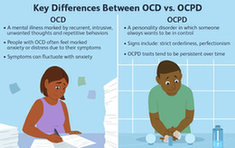
Impact on Daily Life
OCD can have a significant negative effect on a person’s life:
- Time-Consuming: OCD rituals and compulsions can take up a large portion of a person’s day.
- Disruption of Functioning: Due to the time and effort invested in obsessions and compulsions, OCD can affect everyday activities, relationships, and employment.
Potential Causes and Risk Factors
OCD is a complicated etiology that likely combines genetic, neurological, and environmental factors:
- Genetics: The risk is increased by a family history of OCD or other similar diseases.
- Serotonin imbalances, in particular, are hypothesized to be a factor in neurobiological factors.
- Environmental Factors: OCD symptoms may be brought on by or made worse by trauma, stress, or substantial life changes.
Treatment Options
Effective therapies to control OCD and enhance quality of life include:
- ERP is a form of cognitive behavioral therapy (CBT) that includes exposing patients to their obsessions over time without allowing them to act out their compulsions.
- Medications: The symptoms of OCD can be controlled with the aid of selective serotonin reuptake inhibitors (SSRIs).
Advertisement
Conclusion
Obsessive-Compulsive Disorder (OCD) is a complicated illness that can have a big effect on a person’s everyday thoughts, actions, and routine. We may provide a more encouraging atmosphere for people with OCD by comprehending the nature of obsessions, compulsions, and their impact. Reducing stigma and fostering greater understanding of this difficult mental health disease call for seeking professional assistance, engaging in therapy, and spreading awareness about OCD.
Advertisement
Post-Traumatic Stress Disorder(PTSD)
Understanding the Sixth of the 10 Types of Mental Disorders
A mental health disease known as post-traumatic stress disorder (PTSD) may have a significant effect on those who have gone through horrific experiences. We’ll dig into the complexities of PTSD in this essay, looking at its traits, symptoms, probable causes, and various therapies. By developing a greater knowledge of PTSD, we can help individuals who are struggling with it by increasing awareness, fostering empathy, and giving better support.
What Is Post-Traumatic Stress Disorder (PTSD)?
A traumatic incident can cause PTSD, a mental health disease that can arise after experiencing or witnessing one. These occurrences might include everything from mishaps and physical assault to natural calamities and exposure to conflict. People who have PTSD frequently deal with bothersome symptoms that linger and interfere with their daily life.
Advertisement
Characteristics and Symptoms
A variety of symptoms that are indicative of PTSD may be divided into four groups:
1. Intrusive Thoughts
These traumatic event-related memories, dreams, or flashbacks are upsetting. People could feel as though they are reliving the event.
2. Avoidance
persons who have PTSD may avoid situations, persons, or activities that bring up their terrible experience. Social exclusion and a feeling of alienation may result from this.
3. Negative Changes in Thinking and Mood
Negative alterations in mental processes and emotions might result from PTSD. People could have a hard time feeling happy emotions or feel guilty or ashamed of themselves.
4. Increased Arousal and Reactivity
People may be easily startled, have trouble falling asleep, and become irritable or angry. The effects of these symptoms on day-to-day functioning can be severe.
Impact on Daily Life
A person’s life may be significantly impacted by PTSD in a number of ways:
- Relationships: Emotional numbness and avoidance make it difficult to establish and sustain relationships.
- Work and Productivity: Increased arousal and intrusive thoughts lead to decreased productivity and attention problems.
- Quality of Life: Due to the traumatic nature of their symptoms, people with PTSD may have a worse than normal quality of life in general.
Potential Causes and Risk Factors
Accidents, attacks, battles, or natural catastrophes are examples of stressful events that might cause PTSD whether experienced or seen. PTSD development may be influenced by a number of factors, including:
- Trauma severity: The likelihood of having PTSD increases with trauma severity.
- Personal History: People who have a history of mental health issues or traumatic events may be more at risk.
- Lack of Support: Lack of social support might make PTSD more likely to occur.
Treatment Options
Effective therapies exist to support people in managing and coping with PTSD:
- Therapy: Cognitive behavioral therapy (CBT), especially prolonged exposure therapy and eye movement desensitization and reprocessing (EMDR), can assist people in processing traumatic memories and easing symptoms.
- Medication: To treat the symptoms of PTSD, doctors may give antidepressants and anxiety drugs.
Advertisement
Conclusion
After experiencing or witnessing horrific events, a complicated illness known as post-traumatic stress disorder (PTSD) may emerge. We can help to foster an atmosphere that is more accepting and encouraging for persons who are dealing with PTSD by having a better awareness of its traits, symptoms, and probable causes. Reducing stigma and building a greater understanding of this difficult mental health issue need taking efforts like seeking professional assistance, going through therapy, and raising awareness.
Advertisement
Understanding Eating Disorders Seven of the 10 Types of Mental Disorders
A complicated mental health problem, eating disorders affect people’s interactions with food, eating patterns, and body image. We’ll delve into the nuances of eating disorders in this article, including their numerous varieties, symptoms, possible causes, and accessible treatments. We can help to increasing awareness, fostering empathy, and improving support for people navigating this difficult region by developing a greater knowledge of eating disorders.
What Are Eating Disorders?

A significant mental health disease known as an eating disorder is characterized by erratic eating habits, a mistaken perception of one’s body, and a strong obsession with food and weight. If left untreated, these illnesses can have serious physical and psychological effects.
Types of Eating Disorders
Eating disorders come in a variety of forms, each with particular traits and traits:
1. Anorexia Nervosa
Extreme anxiety over putting on weight and a continuous quest for thinness are characteristics of anorexia nervosa. Anorexics frequently reduce their dietary intake, which causes substantial weight loss and malnutrition.
2. Bulimia Nervosa
Cycles of binge eating followed by purging behaviors, such as vomiting, excessive exercise, or the use of laxatives, define bulimia nervosa. Bulimics may be of normal weight or maybe slightly overweight.
3. Binge Eating Disorder (BED)
BED is characterized by recurring episodes of eating a lot of food quickly while also feeling out of control. Individuals with BED do not regularly purge, in contrast to those with bulimia.
4. Avoidant/Restrictive Food Intake Disorder (ARFID)
ARFID is characterized by a restricted food repertoire because to sensory sensitivity, choking fears, or other aversions. Weight loss and nutrient deficits are potential consequences of this illness.
Advertisement
Symptoms of Eating Disorders
Eating disorder symptoms can appear in a variety of ways, such as:
- Extreme Weight Changes: Significant weight loss or gain brought on by bingeing and purging or restricted eating.
- Food Preoccupation: Constantly worrying about calories, food, and how you look.
- Unhealthy Eating Habits: Engaging in extreme dieting, fasting, or purging behaviors.
- Body image distortion: Perceiving oneself as overweight even when one is underweight.
Potential Causes and Risk Factors
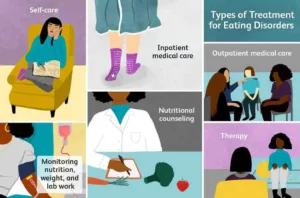
Eating disorders have a variety of root causes, some of which include:
- Genetics: Risk may be increased by a family history of eating problems.
- Psychological Factors: Perfectionism, low self-esteem, and body dissatisfaction play a role.
- Social and Cultural Factors: Societal pressures to meet unrealistic body standards contribute.
- Biological Factors: Brain chemistry and neurotransmitter imbalances may be involved.
Treatment Options
With the proper care and assistance, eating disorders can be recovered from:
- Therapy: People can resolve erroneous ideas and behaviors with the use of cognitive behavioral therapy (CBT), dialectical behavior therapy (DBT), and family-based therapy.
- Nutritional Counseling: Registered dietitians can assist in normalizing eating patterns and promoting a healthy relationship with food.
- Medical Monitoring: In serious situations, medical personnel may keep an eye on a patient’s physical well-being and take action to stop consequences.
Advertisement
The term “eating disorders” refers to a broad spectrum of illnesses that can seriously harm both a person’s physical and mental health. We can provide a more understanding and educated environment for persons facing these difficulties by having a better awareness of the many forms, symptoms, and probable causes of eating disorders. Reducing stigma and assisting people on their path to recovery require taking important measures including seeking professional assistance, encouraging candid dialogues, and promoting body acceptance.
Advertisement
Understanding the Substance Use Disorder of the 10 Types of Mental Disorders
Substance use disorders are intricate, frequently crippling mental health illnesses that entail abusing drugs or alcohol. We’ll dig into the complexities of drug use disorders in this article, looking at their
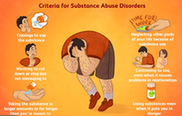
numerous varieties, symptoms, possible causes, and accessible treatments. We can help to increasing awareness, fostering empathy, and providing greater support for persons dealing with drug use disorders by developing our understanding of them.
What Are Substance Use Disorders?
A pattern of using alcohol, drugs, or medicines in ways that are detrimental to the user or others constitutes a substance use disorder. These diseases can have an effect on one’s physical and mental health as well as their relationships and general quality of life.
Advertisement
Types of Substance Use Disorders
Different forms of drug use disorders exist, each based on a particular substance:
1. Alcohol Use Disorder
An excessive drinking behavior that results in physical and mental dependency is the hallmark of alcohol use disorder. When not drinking, people with this illness may struggle to limit their alcohol consumption and go through withdrawal.
2. Drug Use Disorder
Disorders resulting from the abuse of different medications, such as opioids, stimulants, and sedatives, fall under this group. A variety of negative physical, emotional, and social effects can result from drug use disorders.
3. Tobacco Use Disorder
Nicotine addiction, which is frequently present in cigarettes and other tobacco products, is a component of tobacco use disorder. Given how addicting nicotine is, quitting cigarettes can be difficult.

Symptoms of Substance Use Disorders
Depending on the drug in question and the intensity of the disease, several symptoms of substance use disorders may be present.
- Cravings: Severe impulses or wants to use the drug are typical symptoms.
- Loss of Control: Difficulty in regulating or restricting drug usage.
- Withdrawal: Physical and psychological symptoms when not using the substance.
- Neglect of Responsibilities: Substance use-related disruption of obligations at work, at school, or in one’s personal life.
Potential Causes and Risk Factors
A number of variables affect the emergence of drug use disorders:
- Genetics: Risk may be increased by a history of drug use problems in the family.
- Environmental Factors: Early drug exposure, peer pressure, and trauma can all have an impact.
- Psychological Factors: Mental health issues like anxiety or depression may make you more vulnerable.
Treatment Options
With the proper care and assistance, recovery from drug use disorders is possible:
Therapies: People can address harmful habits and cognitive patterns with the use of behavioral treatments, such as Motivational Interviewing (MI) and Cognitive Behavioral Therapy (CBT).
Medication: To treat opioid cravings and withdrawal symptoms, medications like methadone or buprenorphine may be utilized.
Advertisement
Conclusion
Substance use disorders are complex diseases that can significantly affect one’s physical and mental health as well as general quality of life. We may help to contribute to the development of a more understanding and educated environment for persons coping with the problems of addiction by having a better awareness of the many forms, symptoms, and probable causes of drug use disorders. Supporting people on their path to recovery and greater well-being requires encouraging education, decreasing stigma, and seeking professional treatment.
Advertisement
Attention-Deficit/Hyperactivity Disorder(ADHD)
Understanding the Nine of the 10 Types of Mental Disorders
The neurodevelopmental condition Attention-Deficit/Hyperactivity condition (ADHD) affects both children and adults. The complexities of ADHD, including its traits, symptoms, suspected causes, and accessible treatments, will be covered in this article. We can promote more empathy, lessen stigma, and offer better support for those who live with ADHD if we have a better knowledge of the disorder.
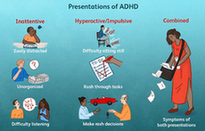
What Is Attention-Deficit/Hyperactivity Disorder (ADHD)?
Advertisement
ADHD is a neurodevelopmental illness that affects a person’s capacity for concentration, impulse control, and hyperactivity control. It may cause difficulties in a variety of facets of life and might present differently in every person.
Characteristics and Symptoms
There are three basic forms of ADHD, each with a unique set of symptoms:
1. Predominantly Inattentive Presentation
This type’s key areas of difficulty include keeping focus, organization, and attention to detail. They could come out as forgetful, easily distracted, and unable to finish duties.
2. Predominantly Hyperactive-Impulsive Presentation
Impulsivity and hyperactivity are features of this kind. People may find it difficult to stay sitting, overhear conversations, and behave impulsively without thinking about the repercussions.
3. Combined Presentation
This presentation, which is the most typical, combines signs of inattentiveness, hyperactivity, and impulsivity. People may struggle to manage their impulses and their attention.
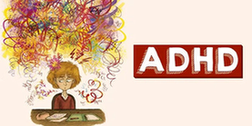
Impact on Daily Life
The following areas of a person’s life can be impacted by ADHD:
- Academic and Work Performance: Attention and organizational issues can affect learning and productivity at work.
- Interpersonal Relationships: Impulsivity and hyperactivity can affect social interactions and relationships.
- Self-Esteem: Struggles with concentration and impulsivity may lead to lower self-esteem.
Potential Causes and Risk Factors
Although the precise origins of ADHD are not entirely understood, a number of variables might be to blame:
- Genetics: Having ADHD in the family raises the likelihood of acquiring the condition.Neurobiological Factors:
- Neurobiological Factors: Differences in brain structure and function, particularly in areas related to attention and impulse control, may play a role.
- Environmental Factors: Premature birth, low birth weight, and exposure to chemicals during pregnancy can all raise the risk.
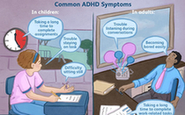
Treatment Options
A variety of techniques that are suited to the demands of the individual are used to manage ADHD:
Behavioral Therapies: Psychoeducation and Cognitive Behavioral Therapy (CBT) are two behavioral therapies that can assist people in acquiring coping mechanisms.
Medications: Amphetamine and methylphenidate are examples of stimulant drugs that are frequently used to treat symptoms by boosting neurotransmitter activity in the brain.
Advertisement
Conclusion
The complicated neurodevelopmental illness known as ADHD impacts how people focus, control their impulses, and control their hyperactivity. Understanding its traits, symptoms, and probable causes can help us to better assist and empathize with individuals who are dealing with ADHD. Reducing stigma and advancing a better understanding of this complex condition require taking important measures including seeking a professional evaluation, putting ideas into practice, and raising awareness.
Advertisement
Dissociative Disorders
Understanding the Tenth of the 10 Types of Mental Disorders

Disruptions in a person’s sense of self, memory, and awareness are symptoms of complicated mental health problems known as dissociative disorders. The complexities of dissociative disorders, including their different forms, symptoms, probable causes, and accessible treatments, will be covered in this article. We can help to increasing awareness, fostering empathy, and giving greater assistance for people navigating this difficult territory by developing a deeper knowledge of dissociative disorders.
Advertisement
What Are Dissociative Disorders?
Dissociation or detachment from one’s thoughts, feelings, memories, or identity is a hallmark of dissociative disorders. These illnesses, which frequently result from stressful events, can have a serious negative influence on a person’s functioning and wellbeing.
Types of Dissociative Disorders
Dissociative diseases come in a variety of forms, each with unique characteristics:
1. Dissociative Identity Disorder (DID)
The presence of two or more distinct personality states that influence a person’s behavior and consciousness at various times is a feature of DID, formerly known as multiple personality disorder.
2. Dissociative Amnesia
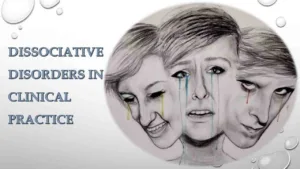
Memory lapses or the inability to recall significant personal information are characteristics of dissociative amnesia, which is frequently linked to traumatic experiences.
3. Depersonalization-Derealization Disorder
People who have this disease frequently feel detached from their own bodies (depersonalization) or as though their surroundings are twisted or unreal (derealization).
Symptoms of Dissociative Disorders
Dissociative illnesses can cause a variety of symptoms, but frequently they involve:
Memory Loss: Memory lapses that go beyond ordinary forgetfulness.
Identity Confusion: The feeling of not knowing who you are or of having several identities.
Emotional numbing: The state of feeling emotionally distant or unresponsive.
Feeling cut off from one’s own body or experiences is known as depersonalization.
Feeling cut off from one’s surroundings or the outside world is known as derealization.
Potential Causes and Risk Factors
In reaction to trauma, dissociative disorders frequently emerge as a coping mechanism:
Trauma: A typical trigger is physical, mental, or sexual trauma experienced as a child or adult.
Dissociation can help the mind cope with overwhelming situations as a protective mechanism.

Treatment Options
Therapy is a common component of effective dissociative disorders treatment:
Psychotherapy: People can process trauma and create better coping strategies with the use of trauma-focused therapy, such as dialectical behavioral therapy (DBT) or Eye Movement Desensitization and Reprocessing (EMDR).
Advertisement
Conclusion
Disruptions in memory, identity, and consciousness are common in a variety of diseases and syndromes referred to as dissociative disorders. We can foster a more understanding and well-informed atmosphere for persons facing these difficulties by having a thorough awareness of the many forms, symptoms, and probable causes of dissociative disorders. Reducing stigma and assisting people on their journey to healing and recovery require taking important measures including seeking expert assistance, going through the right therapy, and raising awareness.



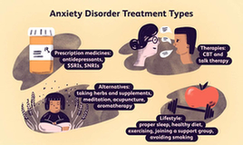
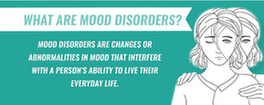


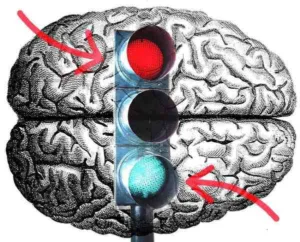
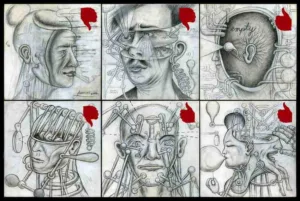


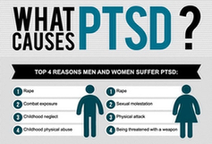




Pingback: How derma rollers may help beard growth - AFitHelp
Pingback: How to Ensure Insurance Covers Revision Bariatric Surgery: (weight loss surgery) A Comprehensive Guide - AFitHelp
Your comment is awaiting moderation.
И все, кроме неподвижного прокуратора, проводили взглядом Марка Крысобоя, который махнул рукой арестованному, показывая, что тот должен следовать за ним. безопасность при онлайн-знакомствах Но какую телеграмму, спросим мы, и куда? И зачем ее посылать? В самом деле, куда? И на что нужна какая бы то ни было телеграмма тому, чей расплющенный затылок сдавлен сейчас в резиновых руках прозектора, чью шею сейчас колет кривыми иглами профессор? Погиб он, и не нужна ему никакая телеграмма.